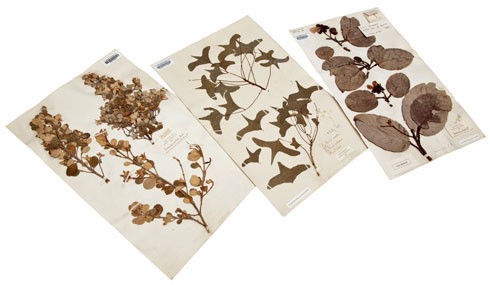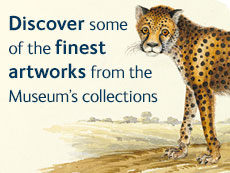Joseph Banks’ herbarium sheet
As a young scientist, Joseph Banks accompanied Captain James Cook on his first voyage to Australia. The incredible numbers of species they discovered fuelled Banks’ ambition to revolutionise global trade and scientific exploration.

HMS Endeavour © Science Photo Library
Cook's first voyage
Captain Cook set sail aboard HMS Endeavour in 1768 to travel around the world. It was one of the first scientific voyages funded by the state.
Banks was rich, so he was able to buy places on board for himself and 7 assistants. He wanted to collect and classify the world’s plants.
Discovering Australia
Cook’s first mission was to go to Tahiti and chart Venus as it crossed over the Sun. Having accomplished this, he revealed a second secret mission - to discover the mysterious Southern Continent.
After weeks of searching, they instead found Australia and became the first Europeans to chart the eastern coast.

Cape Solander, Botany Bay National Park, Australia © Bob Wickham / Photolibrary / Getty Images
They marvelled at the extraordinary wildlife. Banks and his assistant Daniel Solander collected so many plants at their first landing site that Cook named it Botany Bay. By the end of the voyage they had collected more than 30,000 plant and 1,000 animal specimens.
Fame and glory
Cook and Banks returned home as heroes. They had staked England’s claim on a new territory and discovered a colourful world of plant and animal life.
Banks used his fame to climb the scientific ranks. In 1778 he was elected president of the Royal Society, England’s leading scientific body, effectively becoming chief scientific advisor to the government.
He persuaded them to regularly include scientists on naval voyages. Finding out what natural resources could be exploited proved as valuable to the British Empire’s economy as claiming new military territories.

Coloured engraving of the red beech tree, Dillenia Alata.
Banks' herbarium and illustrations
Banks’ global interests were reflected in the enormous natural history, ethnography and literature collections he amassed.
He gave away many of his Endeavour specimens but kept his beloved plants until his death in 1820. His librarian, Robert Brown, transferred them to the British Museum, from which the Natural History Museum was born.
Although Banks never published his Australian botanical discoveries, he had more than 700 illustrations engraved onto copper plates. Over 200 years later, in the 1980s, a full set of colour illustrations was finally printed from them.
Banks’ botanical collections are a precious record of Australia and New Zealand’s indigenous flora and the importance of science in the history of the British Empire.
Further information
- See one of Banks' herbarium sheets in our new Treasures Cadogan Gallery. The page will be changed regularly to prevent light damage.
- View the Endeavour botanical illustrations and find out about the voyage.
- Watch a video about the unique flora and fauna of Australia revealed by the Endeavour and First Fleet voyages.
- Discover more about Joseph Banks and his legacy in our video.
Vote for your favourite treasure
Is this your favourite Museum treasure? Let us know by voting in our poll.

